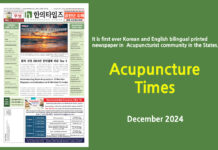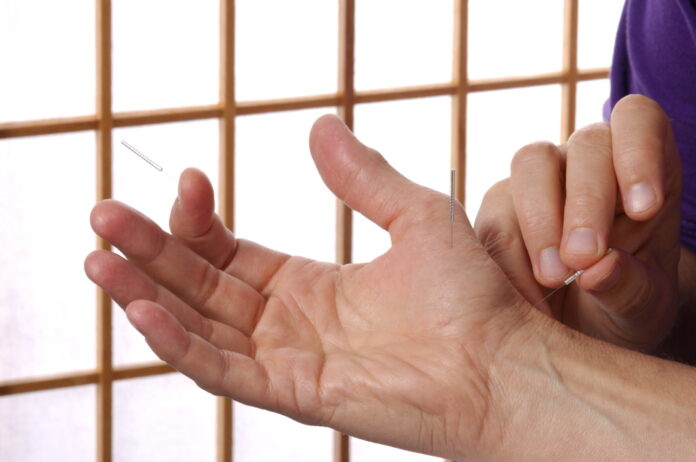Neurobiological Mechanisms of Saam Acupuncture for Clinical Application
- Manyong Park1,2 and Sungchul Kim1,2
1Wonkwang University Korean Medical Hospital, Department of Acupuncture & Moxibustion, Gwangju, Republic of Korea
2ALS Center of Wonkwang University Korean Medical Hospital, Gwangju, Republic of Korea - Hindawi Publishing Corporation, Evidence-Based Complementary and Alternative Medicine, Volume 2015, Article ID 703439, 8 pages
Saam acupuncture principally uses the acupoint below the elbow and knee joint. The five shu points occupy large areas in the cortical representation in the postcentral sensory gyrus in the brain. Cho et al. [34] stated that, based on their knowledge of Western medicine, it is difficult to believe that acupuncture treats organ-related disorders and diseases by direct control of organs. Acupuncture may first stimulate or activate the corresponding brain cortex via the central nervous system, thereby controlling chemical or hormone release to the diseased or disordered organs for treatment.
From this point of view, inserting a needle in the distal limb maybemore advantageous for inducingphysiological activity caused by acupuncture than needling in the trunk. Acupuncture likely has an effect on homeostasis via the somatic autonomic reflex [35]. This homeostasis between the sympathetic and parasympathetic nerve is frequently believed to be the scientific basis for the concept of the balance between yin and yang in TCM. The neural pathways involved in this acupuncture action have been well investigated in animal studies [36, 37].
Sato [37] showed that acupuncture stimulation in the extremity facilitates gastric motility through a somatic parasympathetic reflex associated with the vagal nerve in animal studies. In his studies, the response disappeared after either spinal transaction at the cervical level or bilateral severance of the vagal nerves. This suggests that a mechanism exists at the brain level related to a somatic parasympathetic reflex through the vagal nerve. Nishijo et al. [38] revealed that acupuncture stimulation at PC4 decreased the heart rate as a result of the reciprocal coordination of an increase in cardiac vagal activity and a decrease in cardiac sympathetic activity in healthy humans.
In this case, the reflex pathway might involve an afferent somatic nerve that goes to the brain and spreads to various structures in the hypothalamus, the midbrain, the medulla, and eventually to the autonomic efferent nerve. Acupuncture stimulation on the abdomen impedes gastric motility [37]. Studies also showed that the response was maintained after spinal transection at the cervical level but was absent after bilateral severance of the gastric sympathetic nerve. This suggests that the reflex pathway is propagated within the spinal level, and acupuncture points within certain spinal segments in the trunk tend to affect the functioning of the organs that receive autonomic innervation from the same spinal segments through the sympathetic nerve.
The effect of acupuncture stimulation varies depending on the depth of the insertion, the respiratory phase, stimulation dose, and observation period. Mori et al. [39] showed that needling at TE5 induced pupillary constriction by increasing parasympathetic nerve action. An increase in parasympathetic nerve function was observed after gentle, superficial acupuncture stimulation. Backer et al. [40] revealed that, when inserting the needle at LI4, high-dose stimulation resulted in a greater increase in sympathetic nerve activity than low-dose stimulation.
Haker et al. showed that stimulation of the thenar muscle (LI11) resulted in a significant increase in sympathetic and the parasympathetic activity during the stimulation period and during the poststimulation period. A significant decrease in the heart rate at the end of the poststimulation period was also demonstrated. Superficial needle insertion into the skin overlaying the right thenar muscle caused a pronounced increase in the balance of both the sympathetic and parasympathetic activities during the 60 min poststimulation period [41].
Tanaka et al. demonstrated that SES (superficial needling exhalation phase in a sitting position) stimulation significantly decreased headache intensity, with a strong trend towards decreasing static electromyography (EMG) activity compared to CONT (without considering the respiratory phase) stimulation [42]. This suggests that the effect of acupuncture is derived from point selection of matching symptoms as well as consideration and utilization of the patient’s respiratory phase during stimulation. The above finding suggests that, when applying Saam acupuncture for parasympathetic nerve activation or autonomic nervous system homeostasis, inserting a needle into the skin layer while considering the respiratory phase and stimulating the needle gently and lightly is the most effective.
In the neurobiological model, point specificity does not appear to exist with regard to musculoskeletal action, but five shu points, including PC5, PC6, and ST36, have some point specificity with regard to systemic action at the brain level. This acupuncture-point specificity has been attributed to the presence of a deep nerve [43].However, other acupuncture points overlying the same deep nerve are not effective.
The Saam acupuncture method includes a variety of combinations of five shu points, and each combination is believed to have a distinct effect. However, the specificity of each Saam acupuncture treatment has not been yet identified from a neurobiological perspective. Therefore, when applying Saam acupuncture in the clinic as medical acupuncture, an approach that focuses on the balance and homeostasis of the autonomic nervous system appears to be desirable. Further, revealing the difference between the Yin meridian and Yang meridian treatments, which are anatomically divided into the medial and lateral sides of the body, is necessary from the viewpoint of the neurobiological mechanism.
Conclusion
The original Korean acupuncture method, Saam acupuncture, was invented 400 years ago by a Korean Buddhist monk based on the foundation of Dongeuibogam and Chimgoogyeong-heombang.He embodied Nan-jing’s theory as an acupuncture treatment. Because Saam acupuncture was created on the basis of the theory of oriental medicine, approaching Saam acupuncture in the clinic via the oriental medical diagnosis is easy. However, for Saam acupuncture to be recognized as a medical acupuncture and to be used as a universal treatment in many countries, the mechanism of Saam acupuncture should be explained through scientific verification.
Saam acupuncture, which operates with five shu points as a main aspect of treatment, has the advantage of increasing parasympathetic nerve activity and adjusting the balance of the autonomic nervous system. To maximize this effect, inserting a needle into the skin layer and providing gentle and light stimulation while considering the respiratory phase may be desirable.


































